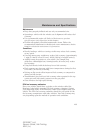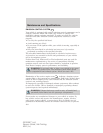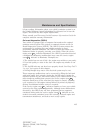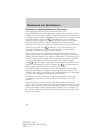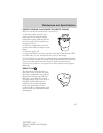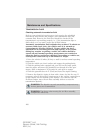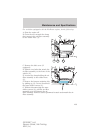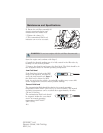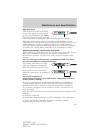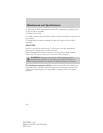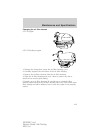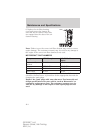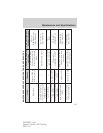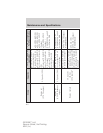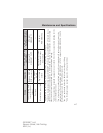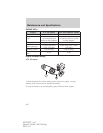
High fluid level
If the fluid level is above the MAX
range of the dipstick, remove fluid
to reach the hashmark level. Note:
Fluid level above the MAX level may
cause shift and/or engagement concerns and/or possible damage.
High fluid levels can be caused by an overheating condition. If your
vehicle has been operated for an extended period at high speeds, in city
traffic during hot weather or pulling a trailer, the vehicle should be
turned off until normal operating temperatures are reached. Depending
on vehicle use, cooling times could take up to 30 minutes or longer.
Adjusting automatic transmission fluid levels
Before adding any fluid, make sure the correct type is used. The type of
fluid used is normally indicated on the dipstick and also in the
Maintenance product specifications and capacities section in this
chapter.
Use of a non-approved automatic transmission fluid may cause
internal transmission component damage.
If necessary, add fluid in 1/2 pint
(250 ml) increments through the
filler tube until the level is correct.
If an overfill occurs, excess fluid
should be removed by an authorized
dealer.
An overfill condition of
transmission fluid may cause shift and/or engagement concerns
and/or possible damage.
Do not use supplemental transmission fluid additives, treatments or
cleaning agents. The use of these materials may affect transmission
operation and result in damage to internal transmission components.
For vehicles equipped with the EcoBoost engine, reinstall the air
filter assembly.
After the fluid level has been checked and adjusted as necessary, do the
following:
A. Shut the engine off.
B. Loosen the clamp holding the air filter assembly to the rubber hose.
C. Rotate the air filter assembly 90 degrees clockwise without
disconnecting the mass air flow sensor.
MAX
MIN
MAX
MIN
Maintenance and Specifications
411
2010 MKT (mkt)
Owners Guide, 3rd Printing
USA (fus)



